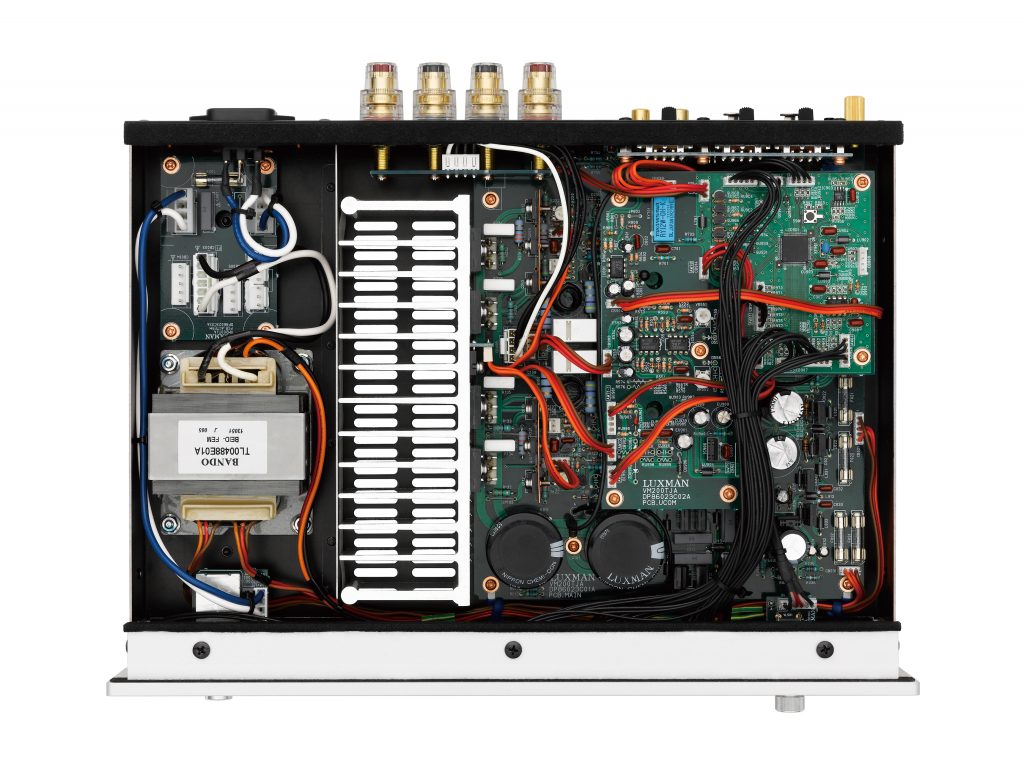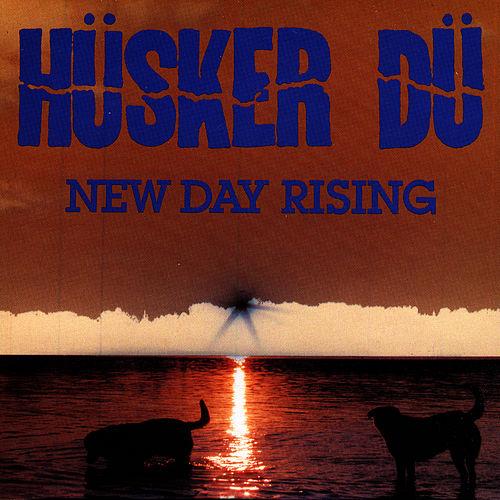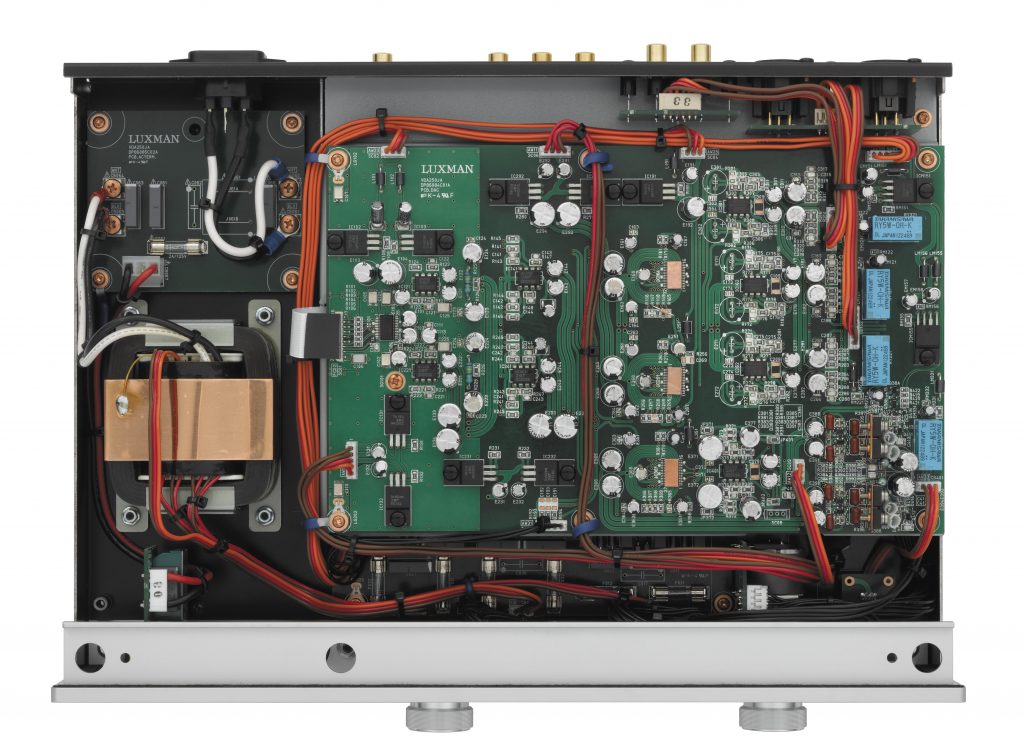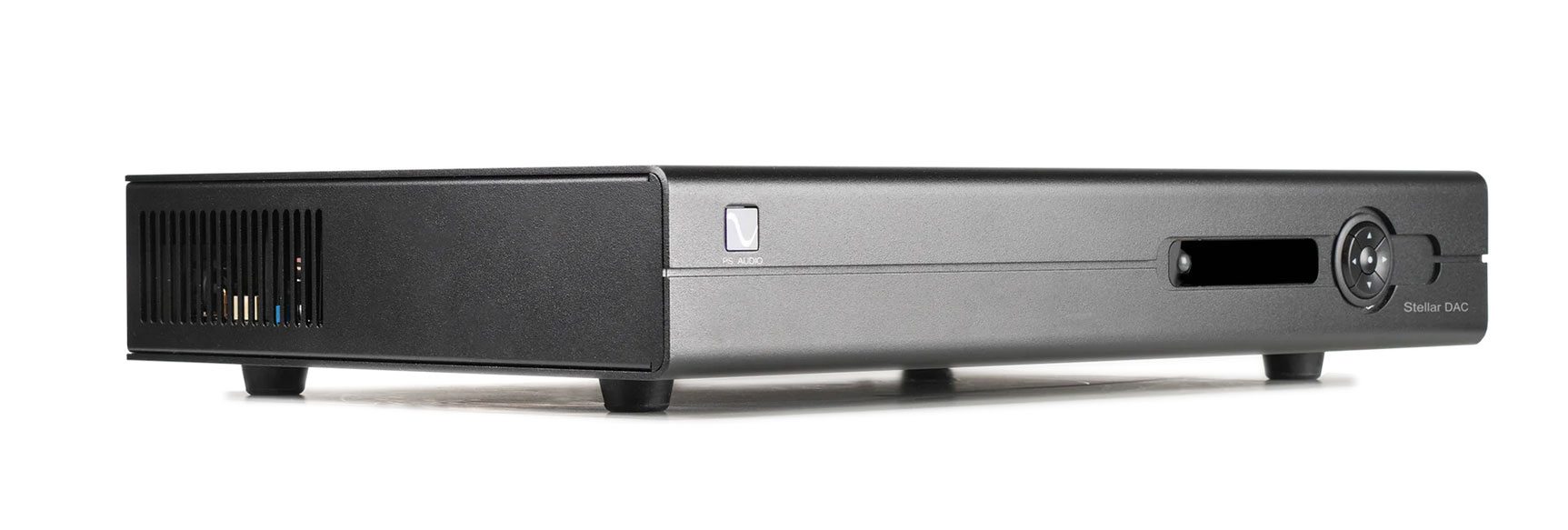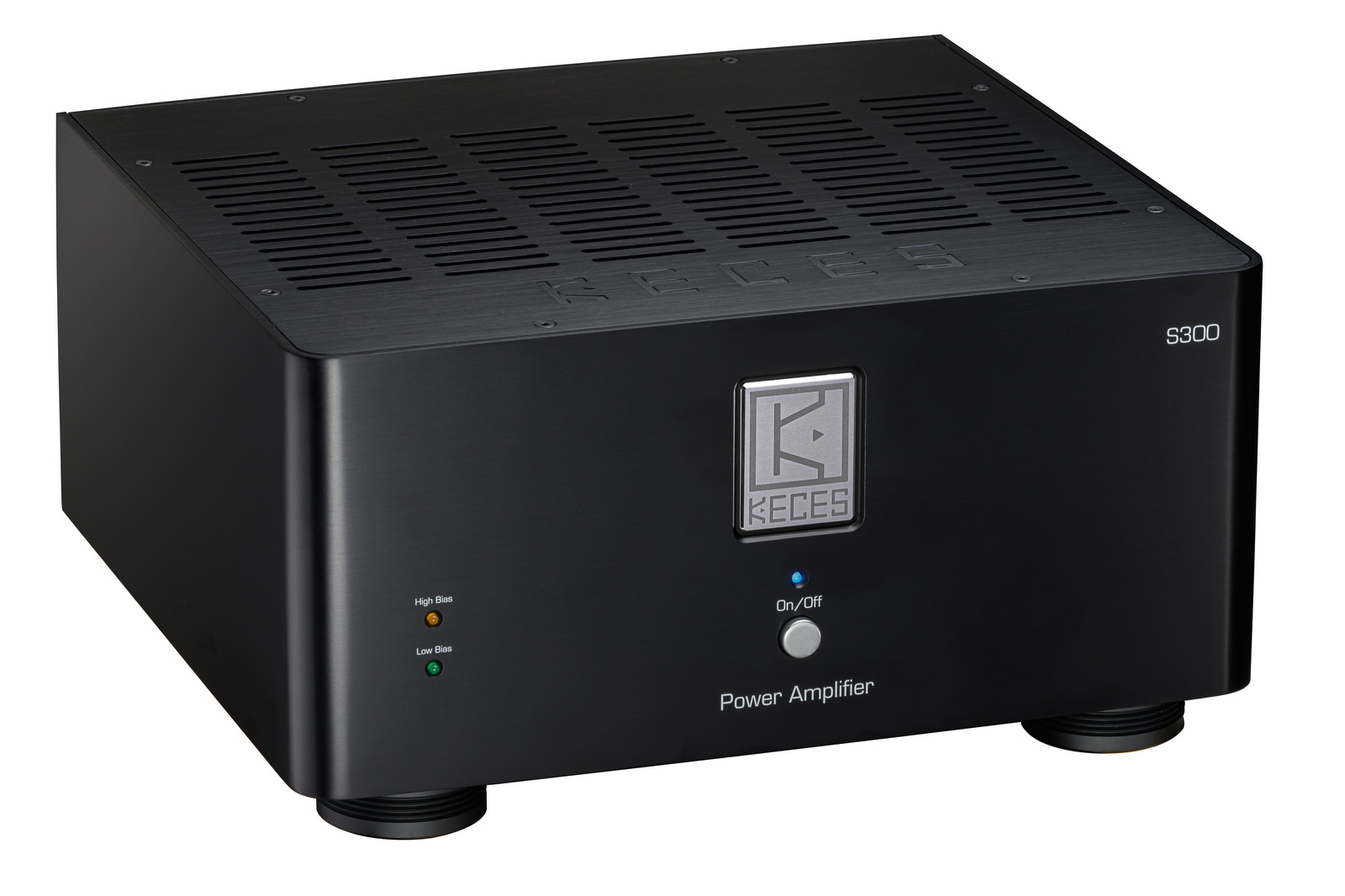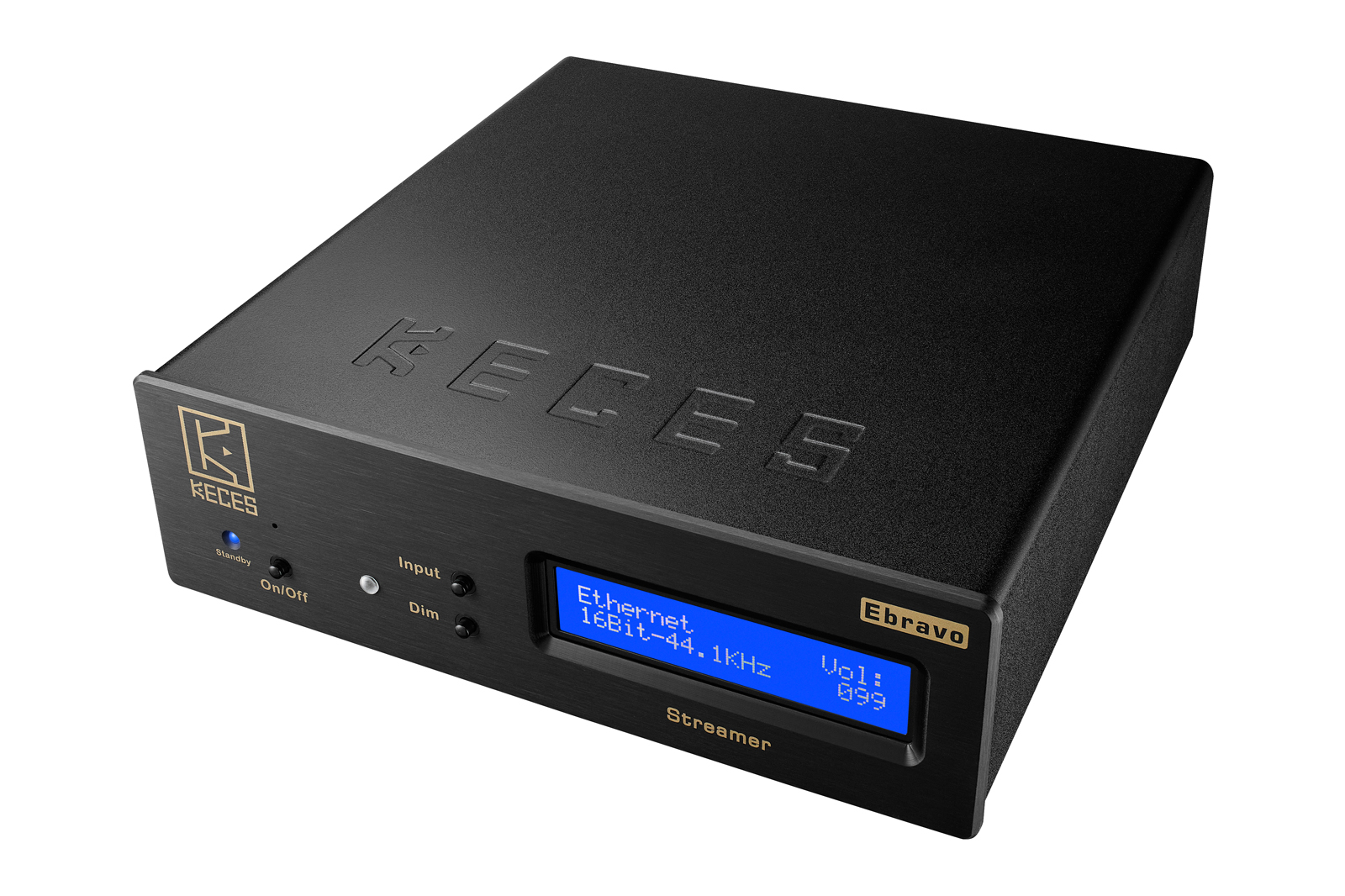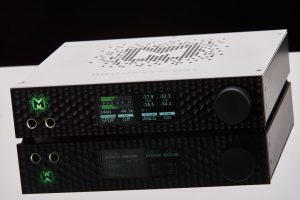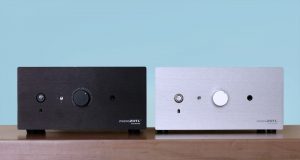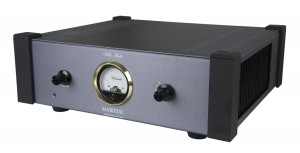Ever been burned by an audio purchase? Yep, me too. Although a lifetime of short-term gratification ensures that I'll never have to worry about blowing big money on audio, I have learned on thing: While flash-in-the-pan audio baubles hog all the press, the wise money goes to companies that deliver high quality over time. For decades, the Luxman way has held fast: silver, square, and sophisticated. Oh, sure, sometimes there is the occasional indulgence in backlit meters and seventies-era wood trim, but you can always bank on the trademark Luxman sound: linear, relatively tonally balanced, and realistic in its presentation of depth and space. No surprises needed or wanted. Which is why I was surprised to encounter the new Luxman M-200 stereo amplifier and DA-250 USB D/A Converter, as both products depart from tradition in a number of ways.
So why the change?
Well, for starters, even Luxman admits that there are those whose tastes and available space demand a more modern style and a smaller footprint. Accordingly, both products are stylishly svelte and compact. Anyone over the age of ten and less than a hundred should be able to easily lift and transport either product. Light, solid-state, and solidly built, you can almost hear the barker shout, "Japanese in quality, European in style, it's the sound of tomorrow, today!" Ok, so maybe the barker is in my head, but it's still not too far from the truth.
Before talking about how the M-200 stereo amplifier sounds when connected to a pair of speakers, the first things to address are its rated output of 25W+25W(8Ω) and its solid-state design. Because the M-200 amplifier does not look like a Shelby Cobra engine bristling with tubes, many potential customers might dismiss it, unheard. That would be a mistake. This amplifier neither blasts your speakers like a Cape Canaveral launching pad, nor lowers you in a warm butterscotch tub of tubey goodness. Nope, it just sits unobtrusively in its space, expertly filling any small-to-medium sized room with richly rewarding sound. I paired the M-200 mainly with the Luxman DA-250 D/A Converter and the Eclipse TD 508 MK3 speakers (reviewed last issue HERE). As noted in that review, the Eclipse speakers are devilishly transparent, and could give pause to amps and sources with something to hide.
Paired with the M-200, the Eclipses show a delicacy and deftness of touch that immediately demonstrated what both amp and speaker could deliver. Still, the easily driven Eclipse speakers couldn't give the M-200 the rugby test I know that some folks demand, so I brought in my Nola Contender loudspeakers. The Contenders definitely like old school tubes and power, and I worried that I'd be lugging them from room to room with nothing to show for it besides a sore back. Fortunately, I discovered that, though the two speakers could not be more different in construction and sonic character, both speakers sang with their true voice. More accurately, both speakers sounded the way that I'd like them to sound.
Of course, total transparency does not exist in amplifiers or advertising, so beware. All amplifiers accentuate, to some degree, one element or another when driving speakers. Given that, the M-200 appears to be remarkably absent of extraneous noise and devoid of glaring sonic imbalances. The quick take on the M-200 stereo amplifier is that it drives the speaker in easy partnership, thus avoiding strain, but adding a hint of warmth. The M-200 is just the thing for playing Harold Budd's "Sandtreader" from his Lovely Thunder album. The album is the kind of new age alpha wave generator one usually associates with a sixty-dollar Shiatsu massage. The M-200 proves to be the perfect partner in conveying the mesmerizing synthesizer drones and lovely keyboard melodies. The big surprise here is that Luxman delivers so much of its trademark sound in a compact, moderately priced, solid-state package.
Moving on to Husker Du' s New Day Rising, the M-200 had no problem rocking with authority. Some may prefer an amp that gives this song more explosive edginess, but that approach only works in short bursts for me. The M-200 resolutely unleashed the barbed wire, late 80's guitar tone driving the Minutemen's "Corona." The M-200 stereo amplifier played reasonably loud and lively in my small room, but those needing more muscle for a larger space or extremely hard to drive speaker will need to consider adding a second M-200. Luxman anticipates this by designing the M-200 so that it can run in mono mode, thus boosting the output to 70W(8Ω). Ultimately, though, the quality and not the size of the amplification matters here.
Luxman likes to offer plenty of features in its products, and the M-200 continues the tradition. Inputs include one RCA unbalanced (RCA) and one balanced (XLR), and you can choose to use the amp in Direct input mode or connected to a CD or DAC/pre using Variable input mode. Finally, the front panel display boasts a digital power meter that can indicate, when selected, speaker impedance and hold time (or not, as you can turn the display off completely).
Not satisfied with offering a living space sized amplifier, Luxman offers an appropriately modern source. Complementing the M-200 stereo amplifier is Luxman's new DA-250 USB D/A converter. Stylistically, a near match to the M-200, the DA-250 has the same slim and minimalist lines of its counterpart. In fact, for much of the review, I used my only available rack space to hold the DA-250 on bottom and the M-200 on top, and all worked out fine. The DA-250 employs a TI PCM1795 DAC chip, and Luxman assures us that, "the USB input is compatible up to 192kHz/32-bit PCM data and DSD data (2.82M, 5.64MHz) whilst the S/PDIF input supports up to 192kHz/24-bit PCM signals." I can attest that I had no trouble playing any of the files specified (I used the Roon Audio music player, primarily). In addition to the unbalanced RCA input, a coaxial and two optical digital inputs are available, as are the USB and headphone input for the included internal headphone amplifier.
The headphone amplifier section is a surprisingly good find (well, surprising to me, as I usually much prefer dedicated headphone amps to the in-house jobs). Some of my headphone brethren may prefer a more "Did you hear that!" headphone amplifier, but I like a sound that wears well, long after the others wear me out. Too many headphone amps juice the bass notes so much that your headphones bounce off your head like they're entered in a car stereo competition. Playing "Burn" from Norah Jones's new album, Day Break, the gliding bass notes were impressive because they were in proportion.
I've been listening quite a bit to the Audio-Technica ATH-A2000Z closed back headphones (review forthcoming). Not to give too much away, the Audio Technica sound is usually smooth, with enough midrange bump to give the illusion of warmth. The worry here was that the match up with the DA-250 and the ATH headphones would be too pleasant to be pleasing. In practice, though, the pairing worked really well. I tried a number of headphones (Audeze LCDX, Astell&Kern/Beyerdynamic AKT5p, Mr. Speakers Either C, et al.) and I finally concluded that the DA-250 headphone amp is an enjoyable listen precisely because it gets the hell out of the way. The Class A design could account for its midrange liquidity. I suspect that all but the headphone amp diehards (those armed with a flotilla of amps for every musical theater) would enjoy the DA-250's headphone amp's performance. Which is all to the good, especially as the headphone amp is just an added bonus for the DA-250.
As a DAC, the DA-250 makes you believe that you are listening to music, and not a digital to audio converter. It doesn't leave fingerprints when handling the music files. Plenty of DACs can dazzle you with an atomization of every spec of audio detail, and even more can serve up music rich as a stack of buttermilk flapjacks soaked in butter and maple syrup. Finding a DAC that gives the best of both worlds is a much trickier find, and usually commands a premium price. The DA-250 does a good job providing clarity while also retaining a comfortably smooth sound that is never cloying. Interestingly, while the DA-250 plays 44.1 files very well, playing higher resolution files really demonstrates its expertise. Of course, it is the recording not the file sample that tells the tale, and I have no interest in fencing with the file fanatics about bit rate and recording provenance. Let's just say that the higher resolution files that I listened to really stood out. If you're lucky enough to have a store of such files on hand, the DA-250 will ably demonstrate what all the fuss is about and make you feel better about spending the money in the first place.
In the end, the Luxman M-200 stereo amplifier and the Luxman DA-250 USB D/A converter are important additions to the Luxman line. Both products deliver a sound that reflects the manufacturer's commitment to enduring value. Pair them with the right speakers (the Eclipse TD 508 MK3 comes immediately to mind), and you have a compact, affordable audio system that many will find instantly appealing.
Luxman M-200 stereo amplifier
Retail: $1990
Luxman DA-250 USB D/A converter
Retail: $2790
US Distributor
On a Higher Note






